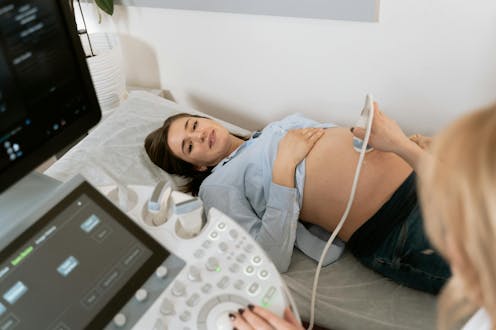If you’re pregnant, how accurate is your ‘due date’?
- Written by Hazel Keedle, Senior Lecturer of Midwifery, Western Sydney University

More than 1,700 pregnant women in South Australia have reportedly[1] been given the wrong “due date” due to a technical error in their computerised medical records. This has prompted concerns some women may have had an early induction of labour as a result.
According to today’s ABC report[2], most of the women whose records are affected have since given birth, while about 100 are still pregnant. Not all women have yet been notified of the error.
An investigation is now under way to find out how the error happened and if the incorrect due dates have impacted care.
But how accurate are due dates anyway? And what happens when we get them wrong?
What is your due date?
What people normally call their “due date” is actually the estimated day your baby will be born. There are a variety of online tools[3] to work out this date, based on something called Naegele’s rule[4], named after the German obstetrician Franz Naegele (1778-1851)[5].
Naegele’s rule works out your estimated due date by taking the first day of your last menstrual period, adding seven days, then adding 40 weeks (nine months).
Naegele’s rule has limitations. First, it assumes all menstrual cycles are 28 days long and ovulation occurs on day 14. It also relies on the woman knowing the date of her last menstrual period.
This method is still used by doctors and midwives to work out the expected date of birth.
However, there is an increased reliance on using an ultrasound between eight and 16 weeks to predict the due date. This measures the size and development of the fetus to calculate its gestational age. From there, the sonographer uses that data to work out when the baby is due.
There’s also a trend towards identifying a date range rather than an exact due date.
A large retrospective study of over a million births[6] in Germany found 90% of births occurred between 19 days before to seven days after the expected due date. That is a range of 37 weeks to 41 weeks’ gestation.
Why are due dates important?
Your due date is important for a number of reasons, beyond allowing you and your family to plan for the months ahead. It’s a key piece of information your midwife or doctor uses to monitor your pregnancy, assess whether everything is on track, and if intervention is recommended.
One intervention closely linked to your expected due date is the offer of induction of labour (being induced) if you are “overdue”. For women who have had their estimated due date incorrectly calculated there is the possibility they will be induced earlier than required.
Using an ultrasound-predicted date[7] can give more accurate dating than using Naegele’s rule, perhaps avoiding unnecessary induction of labour if the woman is not really overdue. However, more evidence is required to confirm this.
Why are we so concerned about inductions?
In Australia there is a rising number of women who have their labours induced compared to waiting for labour to start spontaneously. Now 41% of women[9] pregnant for the first time are induced.
Induction of labour can increase the use of more interventions during labour, such as an epidural and continuous fetal monitoring. It can also increase the chance[10] of a caesarean birth. Research has also found[11] women wish to avoid an induction of labour in a subsequent birth.
The World Health Organization[12] does not recommend women with uncomplicated pregnancies undergo routine induction of labour at less than 41 weeks.
Every week[13] the baby remains in the womb is important as the baby is still growing and developing up to 40 weeks of pregnancy. Every week the baby is born closer to 40 weeks means they are less likely to need to spend time in intensive care.
Can I calculate my own due date?
If you have been told there has been an error in the calculation of your due date you can work it out yourself by:
entering the date of your last menstrual period into an online calculator[14]
looking at the due date calculated during a pregnancy ultrasound up to 16 weeks gestation.
Remember though, there is greater accuracy when you consider a 37-41 week range of when your baby’s due.
Ultimately, your baby doesn’t always play by the rules. And very few babies[15] are born exactly on their due date.
References
- ^ reportedly (www.abc.net.au)
- ^ today’s ABC report (www.abc.net.au)
- ^ online tools (www.pregnancybirthbaby.org.au)
- ^ Naegele’s rule (www.ncbi.nlm.nih.gov)
- ^ Franz Naegele (1778-1851) (pubmed.ncbi.nlm.nih.gov)
- ^ over a million births (www.frontiersin.org)
- ^ Using an ultrasound-predicted date (www.cochranelibrary.com)
- ^ Christian Bowen/Unsplash (unsplash.com)
- ^ 41% of women (www.aihw.gov.au)
- ^ increase the chance (onlinelibrary.wiley.com)
- ^ Research has also found (theconversation.com)
- ^ World Health Organization (www.who.int)
- ^ Every week (everyweekcounts.com.au)
- ^ online calculator (www.pregnancybirthbaby.org.au)
- ^ very few babies (www.frontiersin.org)
Read more https://theconversation.com/if-youre-pregnant-how-accurate-is-your-due-date-233547

















